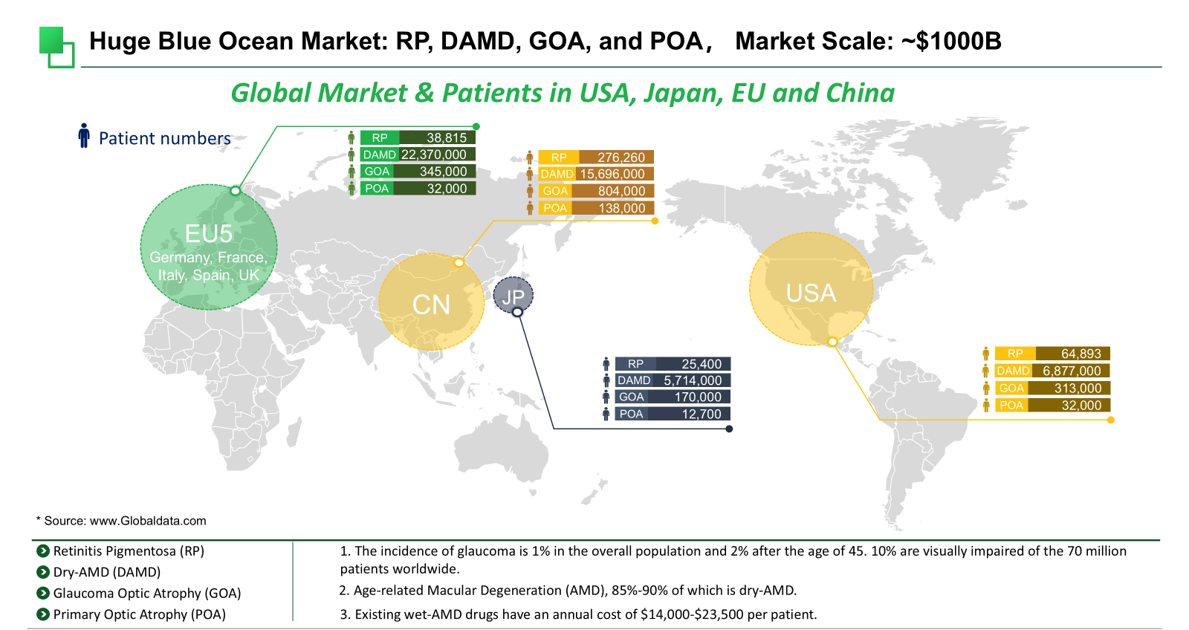INVESTORS
Market Potential
Retinal neurodegenerative diseases, including but not limited to Retinitis Pigmentosa (RP), Dry Age-Related Macular Degeneration (DAMD), Glaucoma Optic Atrophy (GOA), Primary Optic Atrophy (POA) represent huge unmet medical markets.
DAMD is a slow deterioration of the cells of the macula, often over many years, as the retinal cells die off and are not renewed. The term ‘dry’ does not mean the person has dry eyes, just that the condition is not wet AMD. As of 2024, approximately 200 million people worldwide are affected by Age-related Macular Degeneration (AMD). This number is projected to increase to 288 million by 2040 due to aging populations, and 85-90% of AMD patients are DAMD. (GlobalData 2017)
Optic atrophy is a disease that affects the function of the optic nerve, resulting in lesions of retinal ganglion cells and their axons, and clinically classified into two main categories: primary and secondary optic atrophy.
Primary Optic Atrophy (POA) is an optic neuropathy that primarily affects the ganglion cells and their axons between the retina and the lateral geniculate body. The main symptoms of primary optic atrophy include reduced vision and a grayish-white or pale optic disc. When the nerve fiber layer around the optic disc is damaged, slit-like or wedge-shaped defects may occur. The number of small blood vessels in the optic disc may be reduced, and the retinal arteries may become thinned and narrowed, or even occluded.
Secondary Optic Atrophy (SOA) is a manifestation of optic nerve damage, which unlike primary optic atrophy, is usually caused by other eye diseases or lesions. Clinically, it is commonly seen in secondary optic atrophy caused by diseases such as glaucoma and diabetic retinopathy. Glaucoma Optic Atrophy (GOA) is very common among later stage glaucoma.
According to Globaldata, there are currently nearly 2 million patients in the United States, China, Japan and 5 Western European countries.
Should you be interested, please send your inquiry to: [email protected]

Advantages
- Proven neuroprotective and neurorescuing effects demonstrated in animal and cellular models
- Reverse engineering: Drug discovery path increases the chance of success
- Highly converging data predicts the high chance of success in patients
- Orally bioavailable, fast absorption, target organ exposure
- Predicted favourable safety and tolerability






